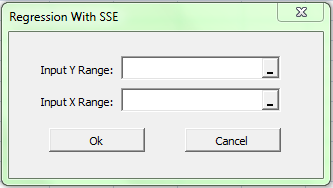Equity allocation from naojan
Philippine Stock Market Outlook - As we recall, we found out that Consumer Staples, Utilities, Financials, Real Estate and Tourism are the sectors that are favorable to invest in. Moreover, analyzing the PSEi risk return statistics using monthly rolling annual log returns, each sector has something to give as the stock market today is very attractive. Applying the optimizer, by minimizing the variance subject to the constraints by the fund and client requirements and expected return greater than 15%, we found out that it is advisable to invest in Holding firms, Mining and oil and Services.
Stock Selection Screening - Furthermore, we analyzed each stock per sector that is found in the PSE. The bullets below are the things that we did in our analysis.
- Fundamentals - we analyzed each of the stocks by using different ratios based on whether the stock is Cheap or Not, its Liquidity, Leverage, Growth and if it pays Dividend or not. Also, specific ratios are used depending on what sector we are analyzing. ie. for banks, we used P/B as for holding firms we used P/B and P/E.
- Technicals - we just looked at the periods from 2007 onwards whether the stocks is a bull or in the bear market
- Risk Return Statistics - here we looked at the volatility, mean return and the sharpe ratio like what we did above in the Phil Stock Market outlook.
- Other Analyst Consensus - we also considered other analyst consensus using Reuters.
- Optimization per Sector - same as Phil stock market outlook, we use the optimizer in each stocks per sector to minimize risk subject to the return greater that 15% and fund and client requirements. It determines the possible weights for each stocks and the stocks that we can pick for the investment.
After all the analyzing, we found out that some of the weights considered in the optimization did not coincide to the other analyses. As such, we override the values of the optimization as to give in to the consideration mostly on the fundamentals. With so much contemplation, we choose stocks in the PSEi and added more stocks that we think are attractive. We did this so that we really have a very diversified portfolio. Also, we based our weights on the Stock Screening Process and the Portfolio manager had the final say. Final picks and weights are in Slide 14 to 16.
In choosing those stocks, we are glad to report that after doing the correlation matrix, most of them are uncorrelated and we had a portfolio return of 24.66, which is above the said requirements.






